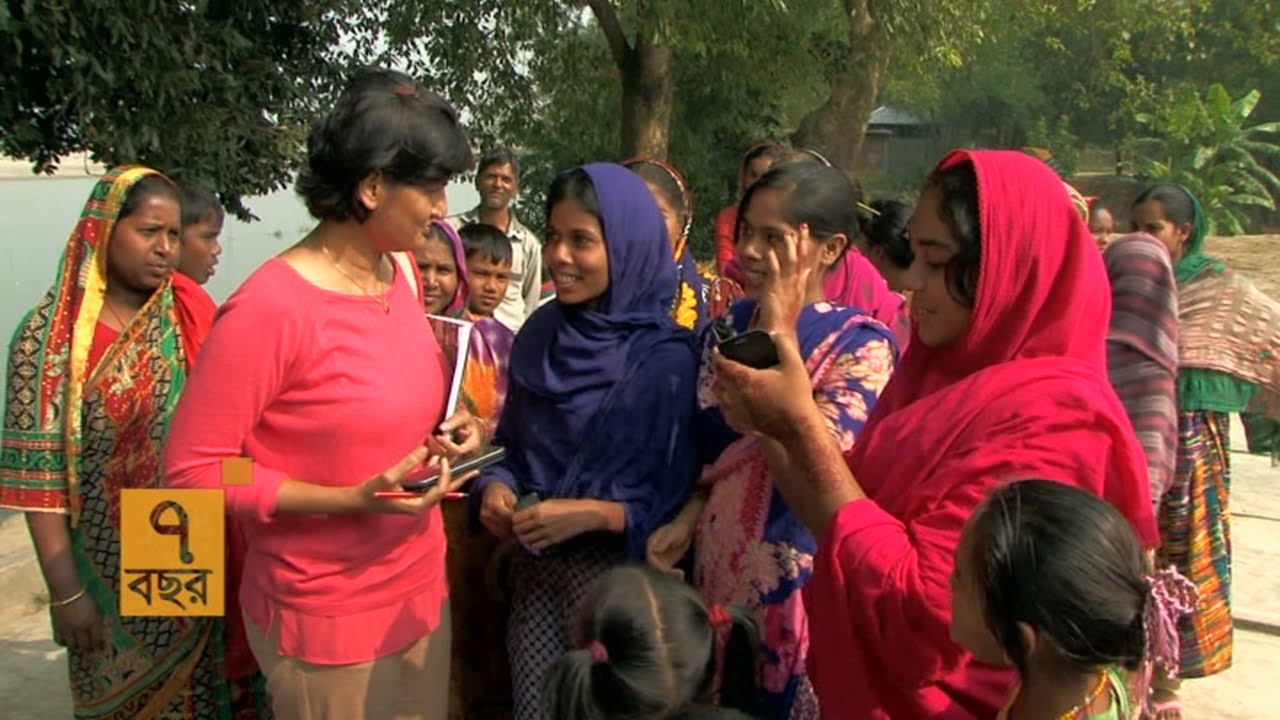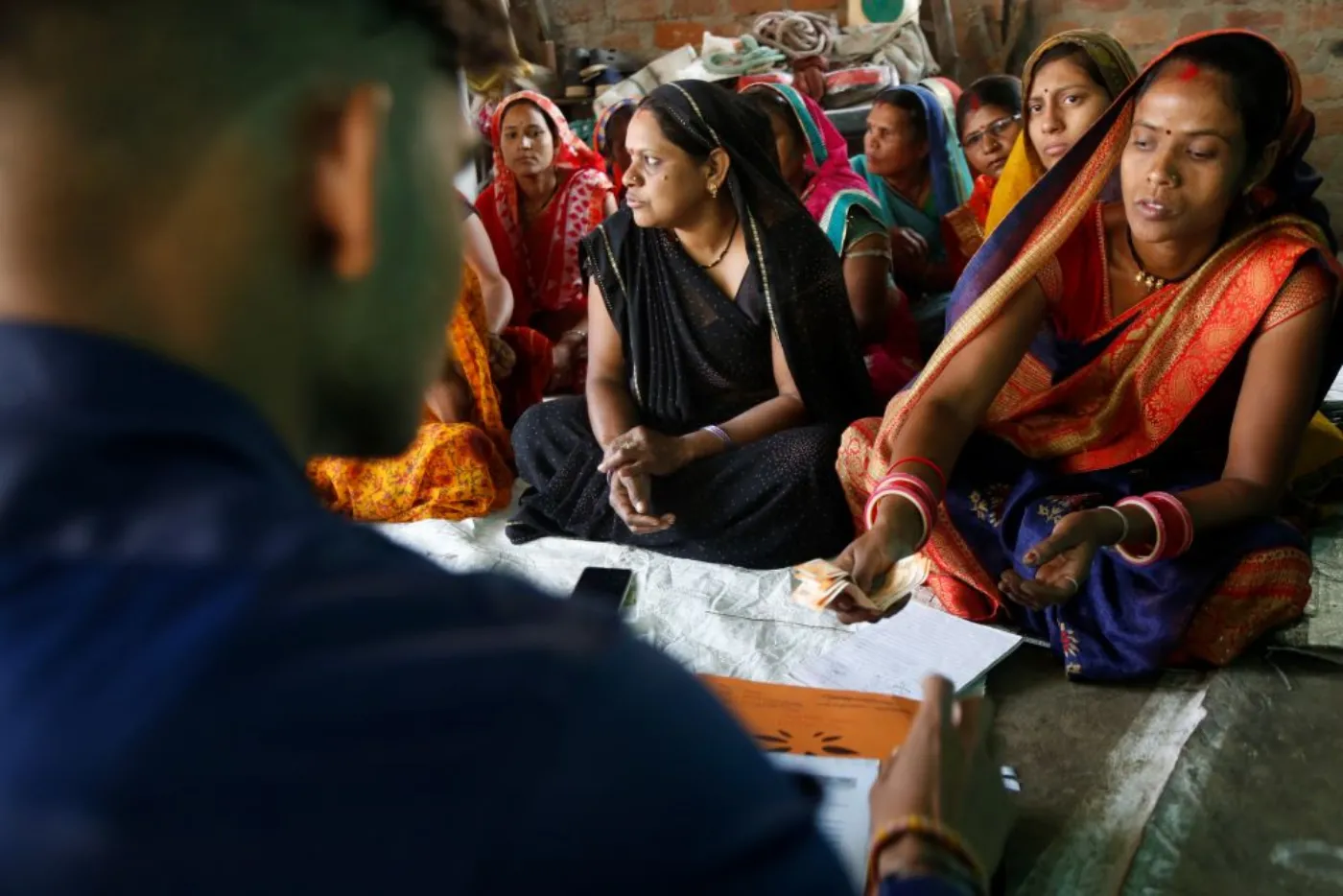In 2010, ATN News was established as the first and only 24/7 nationwide news channel in the country, spearheaded by journalism legend Mishuk Munier. Munni Saha, a trailblazer in her own right as a woman in the predominantly man’s world of journalism, was recruited as the head of news there. Having started her career in the 1990s by raising her voice fearlessly, she quickly becmae the trustworthy big sister, didi of the women who would come to her office from far-off villages to get a chance to speak with her about their personal issues. These ranged between their girls’ studies to health problems, notwithstanding marital discontent and family feuds.
That is when Munni Saha decided to launch a platform for the these women to voice their worries from their home, on national television. Mishuk Munier suggested using modern technology to connect the studio in Dhaka with a team that would go to the different locations. ‘Connecting Bangladesh’ was thus born. The first show was aired in the summer of 2011.
‘Connecting Bangladesh’ opened a window to the uneventful, the common, the mundane – a world which was previously hardly ever shown on the small screen. The spaces were predominantly owned by the otherwise marginalised, invisible majority. In what formed an unusual space of freedom, ‘Connecting Bangladesh’ shows rural locations without poetic projection – just the way local women experience their home.
Also read: Eight TV Shows For The Feminist In You
‘Connecting Bangladesh’ opened a window to the uneventful, the common, the mundane – a world which was previously hardly ever shown on the small screen. The spaces were predominantly owned by the otherwise marginalised, invisible majority.
Language is kept simple and direct. Munni Saha uses the local dialects as she interacts with the guests, mostly women from amongst ethnic and religious minorities.
This very basic content may seem otherworldly to the socially-confined elite. Which is why, it would have been easier to dismiss the show (from a ‘mainstream POV’) as being diminutive or innocuous, considering it is just a group of ordinary women discussing their lives and the issues around them very ordinary issues. But considering how an intersectional approach is key to the feminist movement, this is exactly where the movement needs to ground itself to hope for any large-scale constructive change.
Disrupting Traditional Narratives
‘Connecting Bangladesh’ ensured that women who earlier had no proper access to the so-called mainstream media and national television could now speak about the issues they faced, from the comfort of their own surroundings and without having their voices appropriated was a significant step in the direction towards equitable representation.
The show as such has become a stage for the self-performance of womanhood and motherhood. But this is not empowerment grossly imposed from outside – it is self-produced empowerment.
This performative aspect does not only happen on screen. Off-screen too, a particularly interesting reoccurrence proves the way the show disrupts traditional narratives. Feminist psychology has highlighted the focus on the ‘absence’ in the feminine body. This absence however can be compensated by a symbolic object to turn it into a masculinised body. Only then does it become a body that can hold power (however temporary) within patriarchy.

During one particular coverage of the many, one local girl is chosen as group leader. She gets to integrate, on national television, that symbol: a hand-held branded microphone. After the recording is done, many girls ask to be pictured with the aforementioned mic-in-hand, narratively creating a moment of power. Voice is power and ‘Connecting Bangladesh’ ensures to keep this theme central in the way they run the show. When cravat mics are widely available, choosing to keep a visible microphone unconsciously symbolises this empowerment.
Individual Voices, Countrywide Scale
The recurring testimonies on ‘Connecting Bangladesh’ of 20-something mothers of having to go through their heavy workloads with advanced prolapse and, for many of them, chronic infection or even undiagnosed cervical cancer, is a painful echo to the ‘Girl Not Bride’ signs we never really take note of on our village roads. It is painful because it highlights my own privilege, and conditioned apathy.
Watching a few episodes of ‘Connecting Bangladesh’, I realised that it does not only take awareness of the cause-effect chain to stop social suffering. It also does not only take a lead-by-example sort of approach.
Also read: Indian TV Serials Are Not All About ‘Rasode Mein Kaun Tha?
Watching a few episodes of ‘Connecting Bangladesh’, I realised that it does not only take awareness of the cause-effect chain to stop social suffering. It also does not only take a lead-by-example sort of approach. It requires instilling a high amount of self-respect and self-assurance in mothers and daughters, notwithstanding fathers and sons. This needs to trickle down from the mainstream all the way into the margins.
In the mostly patrilinear Bangladeshi society, where the teaching of human biology in school still greatly suffers from conservative ideals and taboos, gaining valuable information on their mother’s, wife’s or daughter’s experience is a high incentive for people of all genders, from all social spheres. And that is what makes ‘Connecting Bangladesh’ really impactful.
Deborah Zannat was born in Paris, France. In previous chapters of her life she has worked in various capacities in the arts and culture industry in Europe, the UK and the USA, as an academic translator and live interpreter, and as a yoga teacher. She holds a Master in Comparative Theology from Université de Lorraine (France), for which she led field research in South India. She has lived in rural Bangladesh since 2016, and strives to embody the ideal of universal human identity beyond gender through spiritual discipline in the Baul lineage. Her main areas of research are at the crossroads of feminism, contemporary mysticism and globalisation.
All pictures as provided by the author.




